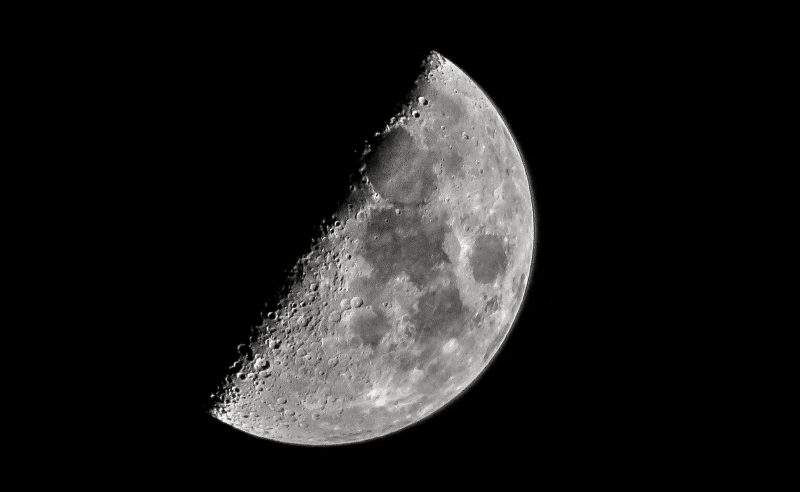International Observe the Moon Night 2023
International Observe the Moon Night (InOMN) is October 21, 2023. It’s a worldwide event for moon-lovers, held annually since 2010. It’s scheduled each northern fall, on a night when the moon is near the first quarter phase. In October 2023, the first quarter moon is October 21. So you’ll see a first quarter moon in the sky on Saturday evening.
Observing the moon with a telescope around quarter-moon phases is more fun, because more detail is visible on the line between lunar light and dark (day and night). That line is called the terminator. On a first quarter moon, that’s the line of sunrises, and just as during an earthly sunrise, shadows are longest along the lunar terminator. So lunar features stand out most clearly then. Also, look beyond the terminator for an illuminated mountain peak or crater rim that appears as a speck of light on the dark moon.
Click here to download NASA’s 2023 observe the moon map.

Participating in International Observe the Moon Night
How can you participate? Will there be star parties with telescopes, or other events, in your area? Go to the InOMN website to find an event near you. There’s also information about how to host an InOMN event. And you can share pictures and highlights from your moon-watching fun on October 21.
Also, check out this Ten Ways to Observe the Moon.
Want to stay home and have fun observing the moon with your family? Try this article from NASA Night Sky Network: Weird ways to observe the moon
How to observe, safely
The InOMN website states:
Whether you are able to safely host a physical event or you are interested in planning a virtual event, we are here to help. Please observe in the way that is healthiest for your community and yourself …
Your event can be a small gathering of friends or family, an online program for thousands of visitors, or anything in between. The size, location, and agenda are for you to determine, based on public health guidance in your area, your interests and expertise, the interests and needs of your audience, and the resources you have available.
Though we encourage everyone to participate in International Observe the Moon Night on a specific date each year, we understand that this date may not work for everyone. You are welcome to host your event on a different day. The main objectives are for you and your audience to observe and learn about the moon as well as celebrate your personal and cultural connections to our nearest celestial neighbor.
Click here to register your event for International Observe the Moon Night
Go to the event’s website to look for an InOMN event near you
First quarter moon photos from our EarthSky Community


Thank you to all who submit images to EarthSky Community Photos! View community photos here. We love you all. Submit your photos here.
Bottom line: A global, public event – International Observe the Moon Night – is October 21, 2023. You can look for events near you and to learn how to participate online.











